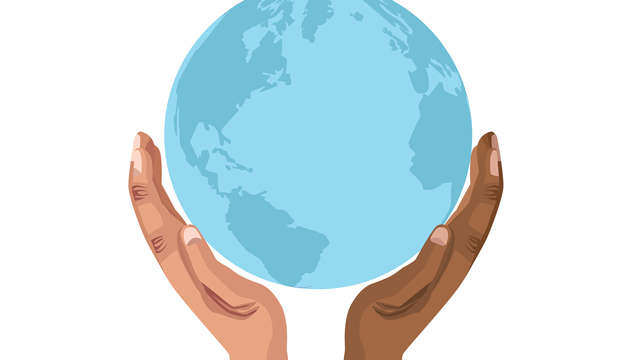Are you raising culturally responsive kids and talking to them about antiracism? Read tips for talking to your kids about race and advocating for others.
Last summer, my son Evan and I started our own mother-son book club. I was in search of something contemporary for us to read, and a friend recommended Merci Suarez Changes Gears by Richmond author, Meg Medina. Evan and I became instantly attached to the protagonist, a sixth-grade scholarship student who is dealing with a lot at school and even more at home. As my son and I made time to read together each week, I noticed that so much more was happening besides simply enjoying a great story. We were having meaningful conversations – about language, foods from other cultures, and traditions that are different from our own. We were learning and growing.
I am both a parent and an educator, and I am very invested in cultural responsiveness. Recently I’ve started asking myself how I can do better, though. I want to have important conversations about race and culture with my own children, but what do these conversations sound like? What is appropriate to discuss with younger children? And where do I begin?
Talking with Children about Race
Lucretia Marie Anderson, founder of Joyful Muse, is a life coach who helps clients understand racial trauma and heal from it. Joyful Muse’s services include a four-week program in which parents gather to expand their knowledge about antiracism practices and receive tools that help with raising antiracist kids. This Compassionate Anti-Racist and Equity (CARE) coaching workshop is available for corporations and families to process their own values and feelings from a place
of compassion.
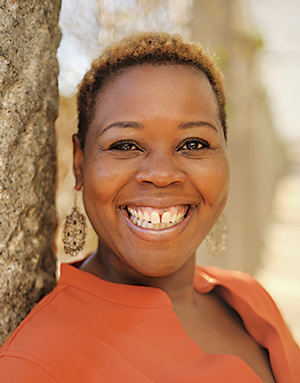
In coaching sessions, Lucretia Marie (who uses the pronouns they/them) encourages parents to consider biases that were passed down to them, examine them, and decide what shifting those biases would look like. They suggest we tell children about our belief systems and explain what bias means. “Tell them [the children] that bias is natural and that we all have preferences,” Anderson says. “But we can’t allow preferences to influence our decisions on important topics and groups of people.”
Then, Anderson asks workshop participants to think about what they are doing in their lives that supports or contradicts that bias. “We want to empower children to say, ‘This goes against my value system’ when they witness an act of racism or bullying,” Anderson says. “We want to create change agents and help people understand that antiracism is a way of life.”
Anderson acknowledges that there are times when these discussions and workshops can be uncomfortable. “Discomfort is often necessary in my line of work,” they say. “You can’t heal unless you really take a look at the wounds, and nothing changes without challenge to the comfort you have.”
Even the word “antiracist” can make people squirm in their seats. The prefix “anti” might conjure feelings of opposition, but antiracism is really about understanding, compassion, and moving toward justice. “It’s calling for folks to unlearn racism and dismantle it in any way they can. Antiracism is about expanding your in-group to be more inclusive and fighting against policies that are not,” Anderson says. The life coach says antiracism is a way of life that involves working toward a society that allows all people to thrive.
Becoming Antiracist is a Decision
Cassandra Stanley, EdD, is the assistant director of strategic engagement at Virginia Commonwealth University’s School of Education. While her department most often works with public school educators, it also assists private schools and community groups, like the YMCA.
Dr. Stanley says that one of the first things we can do to work on cultural awareness is to take inventory of our own world. An activity called “How Diverse Is Your Universe?” is an excellent starting point. Designed for both students and teachers, the activity can easily be replicated at home, and it helps us to see the types of people we interact with regularly by asking about the ethnicity of our doctors, dentists, neighbors, classmates, favorite authors, media personalities, celebrities, and others. After answering the questions, participants are debriefed and are given the opportunity to discuss what they discovered and how they might become more involved with different groups of people.
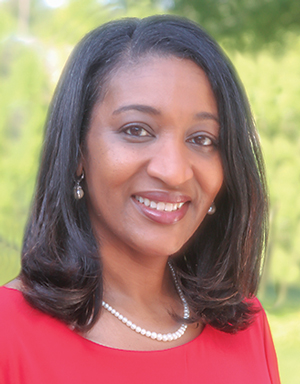
“Cultural awareness begins with small efforts,” Dr. Stanley says. “And our actions have to be intentional. We all deal with implicit bias. We have certain messages ingrained in us from our own experiences and from the media. We have to acknowledge those, so when it’s time to make a decision, we can ensure we are making an informed one.”
Families should work to remain open-minded to growth and social development, especially when it comes to the people and communities with whom we share our world.
“The term antiracist sounds derogatory, so some people tune out. But being an antiracist means actively engaging to dismantle racist systems and endorsing racial equality. It is consistent, continual work.”
Dr. Stanley suggests that we ask ourselves if we are being inclusive of people of all colors. Are we watching movies with Black superheroes? Are we going to bookstores and libraries and looking for characters who are Latinx? Are we visiting museums, festivals, and other culturally inclusive places that explore Muslim and Jewish traditions? These are just a few ways that we can begin to understand life from a variety of perspectives and show our children that all races and cultures matter.
Advocating for Others
Eric Lin is a Chesterfield father of three and a community advocate. He currently serves on five different boards, including the Asian and Latino Solidarity Alliance of Central Virginia. Lin’s efforts center around helping communities understand how to prepare for and deal with incidents of racism. He encourages victims to report these incidents so there can be policy change.
In recent years, Lin has witnessed racism toward the Asian population and an alarming increase in microaggressions including vilification and shunning, as well as incidents involving destruction of property and physical assault. He and his family have been affected personally at his daughter’s school and in their own community.
Just before pandemic business closures, Lin visited one of his favorite fast food restaurants to enjoy a breakfast sandwich. While he was eating, a man walked past his table and commented loudly to another customer, “It’s no wonder the virus came from China because the Chinese are dirty.”
For a few minutes, Lin says he sat there contemplating his next move. Eventually he decided he had to say something.
He approached the man and said, “I overheard your conversation, and I’d like to understand why you made that comment.” The man explained that he worked in China and that his work location had been very dirty. “That’s just the way they are,” the man told Lin.
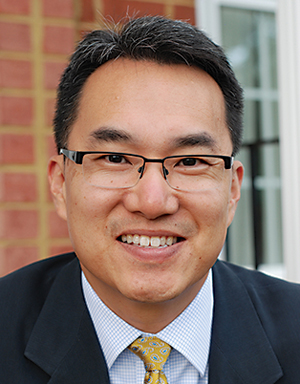
According to Lin, he spoke up in an attempt to dismantle the damaging and racist statement, but there was no major epiphany that day, no breakthrough – just what he called an airing of positions that weren’t going to change.
“I’m sorry you have this view,” Lin said before walking away. “I think it’s very sad.”
Eric Lin has often felt sad, frustrated, angry, and worried because of racial issues. It has affected his family’s vacation planning and caused them to consider destinations in terms of how likely they are to be met with anti-Asian sentiment.
He is also concerned about his children’s inevitable return to in-person school. “I’m angry and motivated to address issues on a national level, but I’m fearful and anxious as a father,” says Lin. “I can’t protect them [my children] forever, but I’m hopeful that they will be able to react in a way that is appropriate and not feel bad about themselves.”
Lin is also hopeful that we can become a multicultural country that truly values distinct differences. Spending time with his own children throughout the pandemic has reaffirmed why he continues to advocate for others.
Lin believes we must help children become change agents, allies, and advocates. We have to record and report incidents and ask victims if they are okay and how we can help. Like Lin did at the restaurant, we also must confront hate and ask questions like, Really? Why are you saying that?
“That man at the fast food restaurant? I’m not going to change his mind,” Lin says. “But there are people who are open to change. There are those with personal and unconscious biases. There are those who, while open and not hostile, still consider us as others in a way. This is where opportunity lies.”
Dismantling Racism
My ten-year-old and I continue to read together in our mother-son book club. Today we read “Why Are There Racist People?” by Duncan Tonatiuh, an essay from the collection The Talk: Conversations About Race, Love, and Truth, edited by Wade Hudson and Cheryl Willis Hudson. With contributions from thirty diverse authors, The Talk is full of revealing and frank moments that inform, empower, and connect younger readers.
The essay we read poses the question of where racism comes from. We aren’t born racist, so where and how are racist beliefs formed? The author discusses the historical practice of greedy people using prejudice as a tool to protect their wealth and that similar situations are continuing to unfold in our current society.
As a mother and a teacher, I can help children understand that inclusivity is a positive thing. We can learn together, educate others, and become allies who stand up for victims of hate. Not only can we help chip away at systems of intolerance, but we can also cultivate diverse communities. We can recognize that this work will likely never be done, but it is great and important work to be doing.
Terms to Know
Review some definitions in the antiracism lexicon.
Antiracism The promotion of racial tolerance and actions against racial hatred
Bias Prejudice in favor of or against an idea, person, or group of people
Diversity The practice of including or involving individuals of various races, different genders, sexual orientations, and social backgrounds
Implicit Bias Attitudes toward people or associations or stereotypes of them without conscious knowledge
Inclusivity The practice of providing equal opportunities and resources for those who might otherwise be excluded or marginalized
Microaggression Verbal and behavioral instances of indirect or subtle discrimination
against individuals in a marginalized group
Privilege Special advantages used to the benefit of some and/or the detriment of others
Additional resources:
More helpful terms and definitions.
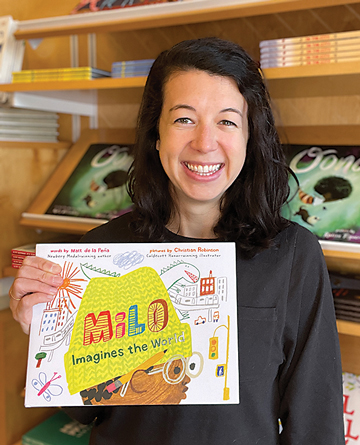
Antiracist Reading
Books can serve as excellent tools and conversation starters with kids of all ages.
Let’s Talk About Race by Julius Lester is a children’s book that presents the message that race is part of our story – a very important part – but it isn’t the whole story. The author encourages children to look beyond skin color, eye shape, and hair texture, and ask questions that can connect us, such as: Where were you born? What do you like? What do you not like? The book also tells children that people who say one race is better than another are telling stories that are simply not true.
The Skin You Live In by Michael Tyler is a picture book published by Chicago Children’s Museum that delivers messages of inclusivity, diversity, and acceptance. The book promotes self-esteem and helps children connect through the act of play.
The following books are recommended by Melanie Ferguson, shop manager and buyer with Carytown bookseller bbgb tales for kids.
Picture Books
Milo Imagines the World
by Matt de la Peña, illustrated by Christian Robinson
My Papi Has a Motorcycle
by Isabel Quintero, illustrated by Zeke Peña
Nonfiction
This is Our World
by Tracey Turner
Big Ideas for Young Thinkers
by Jamia Wilson, illustrated by Andrea Pippins
Middle Grade
The Comeback
by E.L. Shen
Black Brother, Black Brother
by Jewell Parker Rhodes


